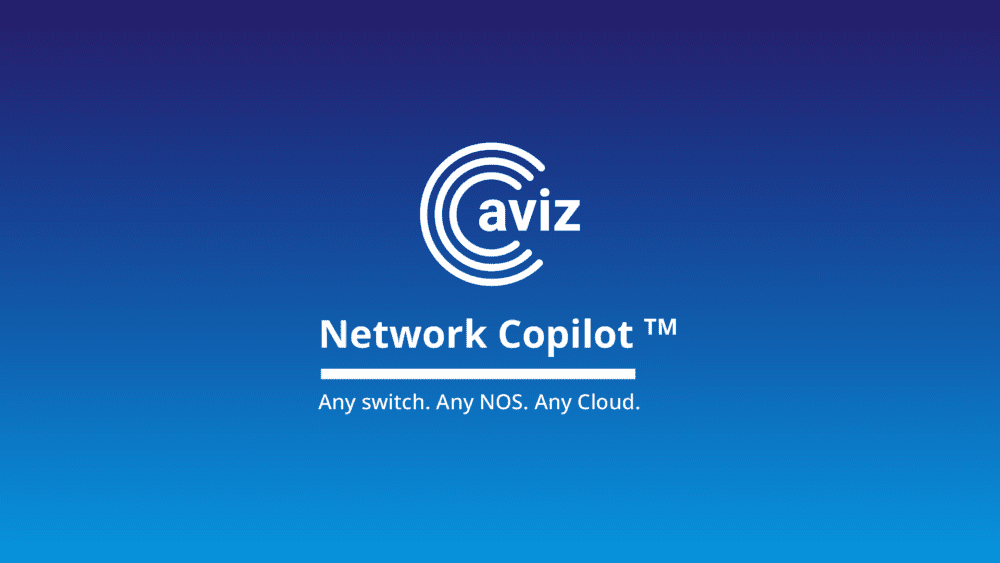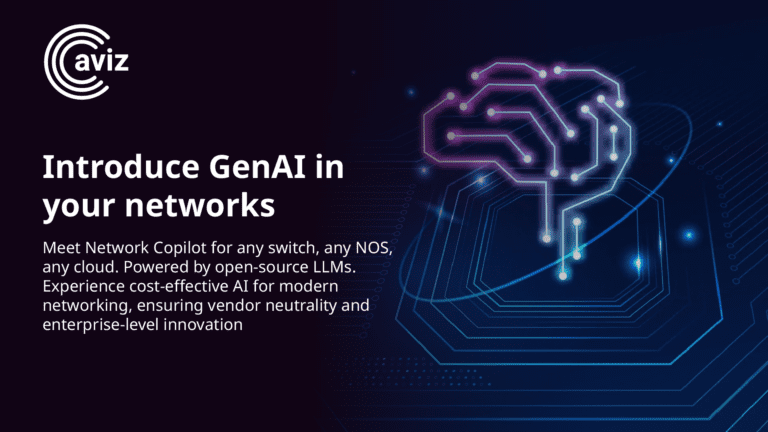Exciting Announcement! In celebration of launching our AI Certification, we’re thrilled to offer a 50% discount exclusively. Seize this unique chance—don’t let it slip by!
Deploy Network Copilot TM to unleash AI on daily repetitive and mundane networking tasks. Free yourself for critical work while AI takes care of the grind

For everyone who interacts with networks – from visionary leaders to hands-on IT professionals seeking to introduce AI into their operations to stay ahead of the curve without budget spikes – we offer a unique solution. With the agility of open-source LLMs for rapid innovation and network vendor neutrality, it’s compatible with both public and private clouds, unlike existing AIOps solutions which are proprietary and cannot keep pace with open-source advancements. All while being cost-effective, our offering directly tackles budget concerns without compromising on innovation and quality.
Our Network Copilot TM, is built on the agility of open-source LLMs, ensuring rapid innovation at a fraction of the cost. With this technology, you don't need a team of data scientists to achieve advanced network management. This approach significantly cuts costs compared to traditional AI operations, making sophisticated network management both accessible and affordable.
Keep your data safe with on-prem deployments requiring no internet
Our Network Copilot TM isn't just a short-term solution. It's an investment in the future of your networks, paving the way for long-term ROI and setting the stage for open, flexible network infrastructures
Break free from the limitations of proprietary solutions. Network Copilot's vendor-neutral design ensures compatibility across diverse network environments, offering flexibility and freedom from hardware constraints
Go beyond basic operations. With Network Copilot TM, dive into detailed insights about your network's performance. Identify trends, detect unusual patterns, and uncover hidden insights, all through a simple dialogue. From compliance to capacity planning and budgeting, NCP opens up new avenues for data-driven decision-making
Imagine talking to your network just like you'd chat with a friend at work. Network Copilot TM makes it super easy — just ask a question. This way, you get the information you need quickly, saving time for more strategic tasks
Free up your team by automating routine tasks like interface status checks, MTU verifications, port usage summaries, and performance snapshots. Just ask, and let AI handle the rest.
Gain instant visibility into platform bugs, CVEs, end-of-life notices, and advisories. Proactively mitigate risks across multi-vendor environments with real-time insights from AI.
On-demand, AI-generated security audit reports covering SSH, ACLs, TACACS+, CoPP, and more. Streamline compliance and risk mitigation across your multi-vendor networks.
Validate OS/firmware upgrades, config changes, and hardware replacements—automatically. Pre- and post-upgrade checks are powered by real-time operational data, so you’re always compliant and upgrade-ready.
Eliminate static dashboards—generate real-time flow analytics, top talker reports, peak usage trends, and protocol-level insights on demand. AI-powered visibility, when you need it.
Ditch static dashboards and rigid templates. With Network Copilot™, generate real-time visualizations and historical flow analytics on demand — track top talkers, identify peak traffic windows, and drill into protocol-level trends with just a prompt.
Whether it’s capacity planning, anomaly detection, or application optimization, you get instant clarity without manual setup or tool switching.
See what’s happening — and why — in real time.
Run audit-grade security checks across your entire network with a single prompt. Network Copilot™ automates compliance reporting for SSH configurations, ACLs, TACACS+, CoPP policies, and more — all tailored to your environment.
It works seamlessly across multi-vendor infrastructures, eliminating the manual grunt work and reducing the risk of misconfigurations or gaps in enforcement.
Stay compliant. Stay secure. No spreadsheets required.
This capability empowers users to instantly retrieve detailed inventory data by simply asking Network Copilot™ for what they need — no manual scripts, no clicking through multiple dashboards. Whether it’s devices, OS versions, HWSKUs, ASICs, MAC addresses, or transceivers, everything is accessible in seconds.
This AI-powered visibility reduces manual audit cycles and accelerates planning for refreshes, compliance checks, lifecycle management, vendor negotiations, and hardware standardization.
Streamline routine network operations by simply prompting Network Copilot™ — no CLI hopping, no tool fatigue. Automate everyday tasks like interface status checks, MTU verifications, port usage tracking, and performance summaries with natural language queries.
This foundational automation slashes time spent on repetitive work and empowers teams to focus on high-impact network initiatives like architecture optimization, SLA assurance, and proactive maintenance.
Eliminate blind spots in your network with instant access to critical support data. Network Copilot™ delivers real-time visibility into bugs, CVEs, end-of-life notices, and platform-specific advisories — all through simple prompts.
This proactive insight helps teams stay ahead of security vulnerabilities, compliance gaps, and hardware/software lifecycle issues — without chasing vendor portals or buried documentation.

Introduce AI in your networks Deploy Network Copilot TM to unleash AI on daily repetitive and mundane networking tasks. Free yourself for critical work while AI takes care of the grind Call us today for a personalized demo Open Source LLMs are Accelerating AI Innovation at Light Speed For everyone who interacts with networks – […]